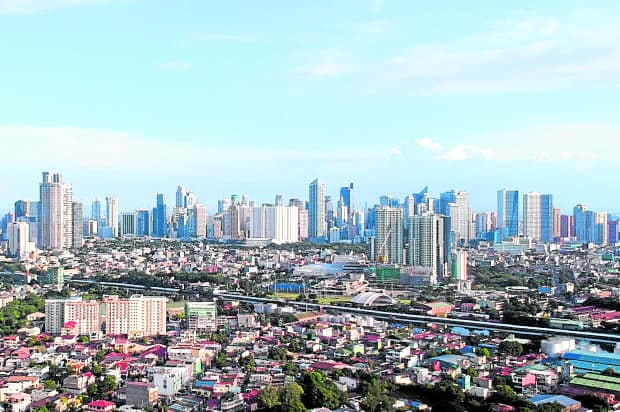
The Philippine economy contracted by 9.5 percent in 2020, the country’s worst performance since World War II.
Colliers believes that the successful rollout of the COVID-19 vaccine will play a crucial role in the country’s economic recovery. The government-projected economic recovery in 2021, albeit slow, will likely support the growth of the property sector.
We recommend that office landlords and condominium developers continue seizing opportunities in the market, especially with remittances from overseas Filipinos seen to grow by 4 percent in 2021, and with office tenants willing to implement split operations and hub-and-spoke leasing schemes. Firms providing essential goods and services, such as e-commerce, are likely to lead office space take-up in 2021.
Meanwhile, mall operators should consider repurposing brick-and-mortar spaces vacated by retailers. The industrial and logistics sector is one segment likely to thrive amid the pandemic.
GDP up for a rebound in 2021
Despite a lackluster economic performance in 2020, government agencies, credit rating and multilateral firms are projecting an economic rebound of between 5.9 percent and 9.6 percent in 2021. This should be supported by the easing of quarantine restrictions and the deployment of COVID-19 vaccines between the second and third quarter this year. In our view, this economic recovery should have a positive impact on the Philippine property market.
Remittances held firm
Data from Bangko Sentral ng Pilipinas showed that cash remittances sent by overseas Filipino workers (OFWs) slipped by only 0.8 percent to $29.9 billion in 2020. While this is lower than BSP’s previous projection of a 2 percent contraction, the figure ended 19 consecutive years of growth. In 2021, BSP sees a recovery of about 4 percent in remittances as it expects a greater deployment of OFWs in the next 12 months compared to 2020.
In our opinion, the rebound in remittances should support the retail sector’s recovery as household spending accounted for about 74 percent of the country’s GDP from 2010 to 2020. Anecdotally, OFW remittances also partially drive the demand for affordable and mid-income (P1.7 million to P6 million) residential units.
Private construction up for a recovery
Private construction was significantly disrupted by COVID-19, resulting in a 46 percent contraction in 2020. This was evident in the turtle-paced completion of offices, condominiums and hotel rooms across the capital region.
Colliers recorded only about 425,500 sqm of new office space completion in 2020, down 60 percent from our initial estimate of 1.07 million sqm. We saw the delivery of 3,370 new condominium units, down 70 percent from the 11,233 units delivered in 2019. Construction of new hotel rooms was also affected by this pandemic. Only 375 new hotel rooms were completed last year from our initial forecast of about 1,700 rooms. Based on developers’ office and residential pipeline, private construction is likely to pick up starting 2021, albeit at a cautious pace.
Mid-income to luxury units to continue driving demand
In 2020, 3,370 condominium units were completed, down 70 percent from 11,233 units in 2019. We expect a rebound in completion in 2021 with the delivery of 10,600 units. Around 86 percent of the total will likely be in the Bay Area and Fort Bonifacio.
The pace of recovery in the residential sector will likely hinge on the rebound of office leasing and improved investor sentiment. This should be supported by low interest rates and competitive mortgage rates.
Mid-income to luxury projects contributed to 86 percent of take-up in 2020, up from 72 percent in 2019. We expect demand to be driven by these price segments in 2021. We believe that developers should also further diversify their affordable to mid-income projects to capture wider market demand. Some luxury and ultra luxury projects recorded stable take up in 2020 as developers extended attractive payment terms.
On the investor side, buyers should be more discerning with property management protocols given the impact of the COVID-19. They should look for units within integrated communities with upscale amenities.
Article and Photo originally posted by Inquirer last April 10, 2021 11:45pm and written by Joey Roi Bondoc.







More Stories
Vista Land Celebrates 50 Years with Sandiwa: An Event Honoring Leadership, Legacy, and the Filipino Dream of Homeownership
Vista Land Celebrates Love Month in Ilocos Region
Vista Land Bridges Cebuano Heritage and Progress with Valencia by Vista Estates